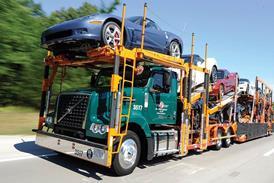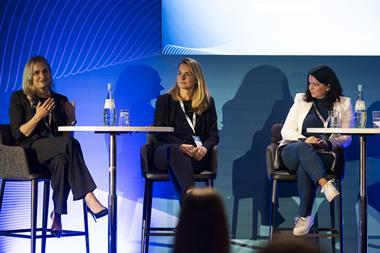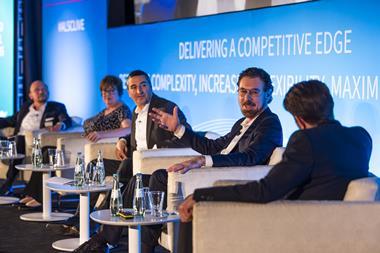 E-commerce in automotive is starting to penetrate spare parts and vehicle purchases, with implications for OEMs, dealers, LSPs and customers
E-commerce in automotive is starting to penetrate spare parts and vehicle purchases, with implications for OEMs, dealers, LSPs and customers
In the early days of eBay and Amazon, consumers marvelled at their own boldness. Buying on the internet was a step into the unknown: sending money to strangers to purchase items that they hadn’t seen and couldn’t touch. Fifteen years on, e-commerce no longer seems so alien. Checks and balances serve to keep buyers and sellers honest while transaction feedback mechanisms reinforce good behaviour.
That said, e-commerce remains the exception for the second largest purchase many consumers will make, after their house or apartment: a new, or nearly new, car.
However, e-commerce is encroaching on the transaction. According to consulting firm Cap Gemini’s 2014 annual survey of consumer car buyers, covering over 10,000 shoppers in ten countries, 54% of consumers use carmaker’s websites to research vehicle purchases, with 52% using search engines. Neither percentage is quite as high as the 55% opting for a visit to a car dealership, but the margin is narrowing: the percentage visiting dealerships is falling, while online search is growing rapidly.
See other stories
- Smartphone apps in logistics
- Last mile: real life on the supher highway
Moreover, significant numbers of consumers are willing to take the next step, from evaluating vehicles online to buying them. Some 48% of consumers in France, for example, describe themselves as either ‘likely’ or ‘very likely’ to purchase a car online. In Germany the figure is 36%, in the US 34%, and in the UK 28%. In developing markets the percentages are higher: 61% of Chinese consumers would buy online, as would 55% in Indonesia, 47% in Brazil, and 55% in India.
These percentages arguably represent a reversal of the original e-commerce wave, where eager sellers struggled to attract sceptical buyers. Today, the most logical e-commerce retailers of new cars are the automotive giants which manufacture those vehicles. However, many manufacturers – the likes of Tesla aside – are nervous about the risks involved in disintermediating their own dealers.
eDealers on the rise
It is therefore dealers who are taking the lead. In the US, for instance, 350-franchise dealership group AutoNation – America’s largest bricks-and-mortar automotive retailer – has become the country’s largest e-commerce automotive retailer, trading as AutoNation Direct.
A spokesperson for the firm says that vehicles on its site are priced with a no-haggle selling price, with cars available across all brands. This price is generally the lowest that the company is willing to sell the vehicle for.
According to Albert Gallegos, director of international affairs at America’s National Automobile Dealer Association (NADA), such dealership-led, e-commerce developments are becoming more common. “It’s a way for dealers to reclaim the relationship with the consumer,” he points out. “Instead of consumers going to third-party websites, they’re going to the dealer again, and spending their dollars there.”

However, the dealer-led relationship has its limits: NADA isn’t anticipating significant inter-dealer competition, for instance, with consumers lured to out-of-state dealerships by lower prices. And being the dominant dealer-based player in vehicle e-commerce, AutoNation Direct’s standard pricing model seems to reinforce that message.
In Europe, meanwhile, there’s an interesting twist to a similar offering. The UK’s TrustFord dealership group – apparently the world’s largest dedicated Ford dealership – has 65 dealerships in the country. It too has a vibrant website for transactions, selling nearly-new and used cars and vans, each ‘priced to go’. Laden with e-commerce features such as owner reviews, vehicle search functions, and payment facilities, TrustFord promotes itself directly and through Ford’s own ‘Ford Direct’ website, which acts as a platform for the OEM to showcase dealers’ stocks of used vehicles, as well as its own inventory of ex-demonstrator models available for re-sale.
Unlike AutoNation Direct, Ford Motor Company wholly owns TrustFord, and the name is a 2014 rebranding, consigning to history brands like Dagenham Motors, Polar Ford, and Brunel Ford.
“We wanted to ensure a joined up customer experience across our entire group and give our customers a better understanding of the scale of TrustFord’s services in the UK,” explains Celia Pronto, marketing and e-commerce director at TrustFord. “We’re proud to have been the first large automotive dealer group in the UK to facilitate online purchases, and we believe that it’s important to evolve our digital channels in line with growing customer expectations, to help give us an edge. E-commerce expectations in all areas of retail continue to move forward, and the automotive sector is no different.”
Cutting out middlemen in the Middle Kingdom
China, too, offers another interesting twist on automotive e-commerce: manufacturers are partnering with third-party e-commerce websites to sell vehicles to consumers directly. However, because it is a different kind of vehicle, these sales are not necessarily threatening dealer relationships.
“Right now, e-commerce in China is growing very, very fast, and both consumers and manufacturers are seeing it as a way of cutting out the middlemen involved in traditional channels,” says Jacky Wang, a former director of automotive logistics planning at Ford China and head of supply chain for Chinese e-commerce giant, Alibaba. Today, he is the founder and chairman of strategy consulting and venture capital firm United Capital.
Specifically, explains Wang, there’s been a significant move to use e-commerce to sell slow-moving stock, or models deliberately configured so as not to compete with dealers. Especially when timed to coincide with peak promotional periods, significant sales volumes are achievable.
 “Partnering with platforms such as Alibaba to take advantage of [China’s] traditional November 11th ‘Singles Day’, it’s easily possible for a manufacturer to sell 10,000 cars in a 24-hour period,” he says. “But typically, it will be models that aren’t best-sellers, because with best-selling models, there’s no need to sell online at promotional prices. Outside of these promotional periods, manufacturers are also making two versions of vehicles – an offline one, and an online one with a different specification.”
“Partnering with platforms such as Alibaba to take advantage of [China’s] traditional November 11th ‘Singles Day’, it’s easily possible for a manufacturer to sell 10,000 cars in a 24-hour period,” he says. “But typically, it will be models that aren’t best-sellers, because with best-selling models, there’s no need to sell online at promotional prices. Outside of these promotional periods, manufacturers are also making two versions of vehicles – an offline one, and an online one with a different specification.”
Online risks and opportunities
Despite the traction that vehicle e-commerce appears to be gaining, there are challenges to address if it is to become the norm in vehicle retailing and achieve the potential penetration levels suggested by the Cap Gemini data – without the automotive industry losing its profit margins.
One difficulty is making vehicle e-commerce transactions smoother and more workable, so that they become an easy alternative to traditional channels, the way Amazon has done with books and electronics. Currently, there are stumbling blocks at each major stage in an online vehicle sale transaction: ordering, delivery, handover, and aftersales service. Yet in each case, it transpires, automotive logistics and allied disciplines have something to offer by way of a solution, suggesting significant opportunity for supply chain experts.

“Basic models sell on single-digit margins, and aren’t where the industry makes its money,” he points out. “The money is made by persuading consumers to upgrade to high-end electronics, leather finishes, ‘feature packs’, and particular colour combinations, which collectively deliver a margin that is much, much higher. But consumers will need convincing to part with their money for these extras, which is much more difficult in an e-commerce transaction. In short, there has to be much more clarity around what is available, and what it will look like.”
How to achieve that is as yet unclear, says Jeffries, but the idea is that it will combine elements of virtual reality, realistic real-time rendering, and easy-to-use consumer-friendly configuration management capabilities.
“Once you start to think about it, it’s a lot more complicated than emulating Amazon, or selling domestic appliances online,” he sums up. “You’re selling the sort of virtual reality experience that high-end dealers are aiming for, but delivered to consumers’ laptops and desktops, and with consumer-friendly configuration management.”
Delivering without scale
Once sold, a vehicle must be delivered; a particular challenge if transactions are direct to consumers, many of whom will expect the prompt and predictable delivery offered by other e-retailers, and which remains difficult enough within the wholesale delivery model to dealers.
AutoNation Direct and TrustFord offer delivery to a consumer’s home or office. Less clear are the economics surrounding this offer. TrustFord, for instance, will deliver nationwide in the UK for a flat fee of £99 ($145) including 20% Valued Added Tax, fuel, the services of a driver, and the driver’s return rail fare to base. While this is a good deal for consumers, it is unlikely TrustFord makes much profit on the transaction apart from deliveries over the shortest distances.
This raises a fundamental issue for vehicle logistics, since long-distance ‘one-off’ deliveries to consumers run counter to the industry’s objective of moving batches that are as efficient as possible – transporter loads, or part-transporter loads, with dealer-driven ordering and replenishment processes making vehicle consolidation like this possible.
Moving away from such consolidated vehicle flows, and towards consumer-driven ‘one-off’ deliveries, would reduce efficiency and add cost. Yet, without some sort of secure staging posts infrastructure, that is the industry’s challenge.
“While there’s been an undoubted increase in e-commerce, there’s still something of a disconnect between the purchase of a vehicle and the delivery of that vehicle,” sums up Wayne Pollock of Car Delivery Network, a UK- and US-based provider of delivery services. “Buyers aren’t as well-informed as they could be about delivery options, and sellers aren’t doing enough to fill the gap.”
Yet models do exist of seemingly-profitable deliveries to e-commerce purchasers. At the UK arm of Manheim, the world’s largest vehicle auction firm, e-commerce accounts for one in three vehicles passing through its ‘dealer only’ online auctions, up from one in four in 2013, a big shift from five years ago, says operations director Nigel Paling.
Likewise, e-commerce sales are growing strongly at online-only CD Auction Group, another UK ‘dealer only’ auction firm (UK consumer legislation renders e-auctions to consumers a largely impractical proposition, say industry insiders). Both companies are seeking to grow their delivery business, seeing it as a source of profitable revenues.

A fixed-price package of £75, including fuel, he explains, is the charge for deliveries in the 51-100 mile (81-160km) range, the most commonly encountered delivery distance. But longer deliveries of several hundred miles are possible, subject to quotation.
Manheim delivers over 50% of the vehicles it sells, relying on 150 ‘trade plate’ drivers, and a fleet of 58 transporters of varying sizes. “There’s a matrix of prices, with one dimension being distance and the other dimension being the number of vehicles to be delivered,” explains Paling. “If the dealer has bought a single vehicle, then we’ll drive it to them; if it’s ten cars, then delivery is by transporter. And if the vehicle isn’t ‘road legal’, we’ll use a one-car carrier, or two-car carrier.”
The very processes that make delivery more efficient perversely operate so as to make vehicle handover more challenging. Because even when driven to a consumer’s house by a ‘trade plate’ driver, the driver may have only cursory knowledge of the vehicle’s full functionality, which is a challenge in today’s technology-laden cars. Currently, there doesn’t seem to be any immediately obvious solution to this issue.
“Longer-term, various solutions could emerge, some technology-led, some logistics-led,” observes Matthias Berlit, vice-president for manufacturing and logistics at software specialist Inform. “It’s possible that a vehicle manufacturer might sell the car directly to the consumer, but pay a local dealer to carry out the handover. Or the vehicle’s features could be explained by an interactive ‘app’ on a smartphone or tablet – or perhaps displayed on the vehicle’s own satnav or audio display screen.
“Two things are certain,” he adds. “First, that the ‘trade plate’ driver isn’t the best person to carry out the handover, and second, that there’s a lot of sense in building ‘how-to’ technology into the vehicle itself.”
Online, there are no dealers or OEMs, just brands
Amazon predicts that 20% of European automotive aftermarket parts will be sold online by 2025. That raises questions about managing aftersales service across dealer and consumer locations.
“Increasingly, e-commerce will push consumers into recognising that they are buying a brand, and that consequently their relationship is with the brand, and not the dealer,” says Richard Wilding, professor of supply chain strategy at Cranfield University School of Management. “Consequently, they’ll want to be able to go into any dealership and have all the information that relates to their vehicle available on tap, transparently – and perhaps paying for maintenance through vehicle-specific ‘service packs’, also purchased online.”
The trick to offering a full e-commerce capability across the entire transaction lifecycle, he adds, will require the industry to successfully adopt or adapt omni-channel lessons from more advanced e-commerce retailing models – such as the ability to buy online, yet take returns back to a physical store – and apply them in an automotive context.
TrustFord’s Celia Pronto agrees. “We believe that omni-channel is the future of car retailing, and we’ve seen strong demand for an omni-channel offering from our customers and an uplift in the number of people contacting us online,” she concludes. “The lines between technology, channels and process will continue to increasingly blur, as customers no longer differentiate between channels: they simply want to deal with a company which can most efficiently provide what they need.”






















